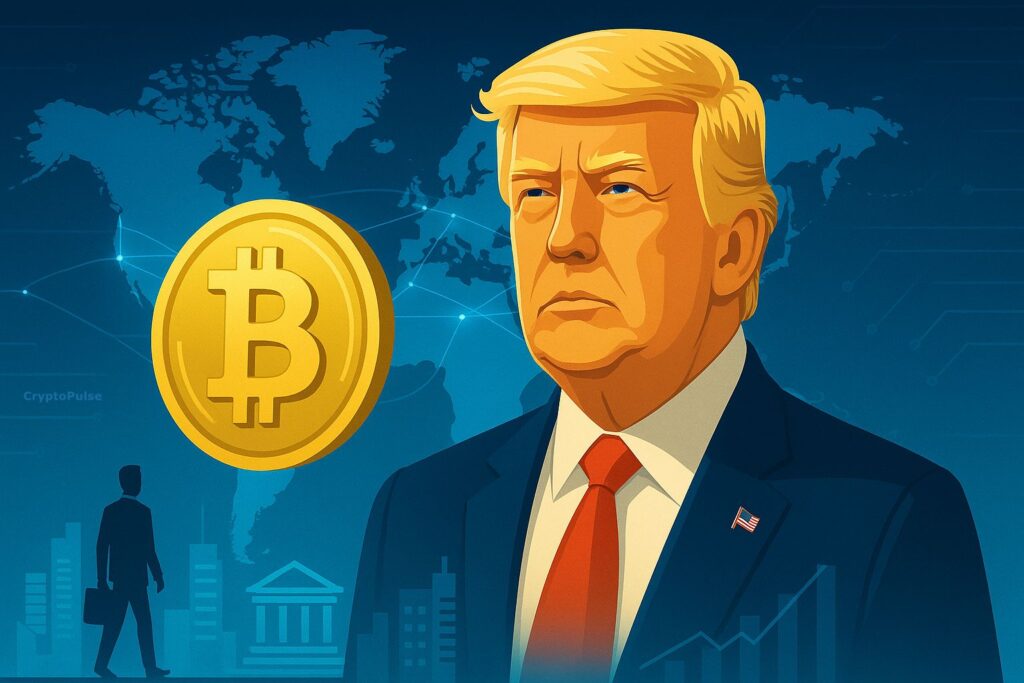U.S. Strategic Bitcoin Reserve Continues to Influence Crypto Markets Amid Economic Uncertainty
The U.S. Strategic Bitcoin Reserve, established by President Trump in March 2025, continues to impact crypto markets as economic uncertainty fuels debate over digital assets’ role in national financial strategy.

The U.S. crypto landscape remains in flux as President Donald Trump’s bold move to establish a Strategic Bitcoin Reserve continues to ripple through markets. Introduced in March 2025 via executive order, the initiative positions Bitcoin and other digital assets as part of the nation’s strategic financial infrastructure—drawing both praise and scrutiny amid volatile macroeconomic conditions.
What Is the Strategic Bitcoin Reserve?
On March 20, 2025, the White House announced the formation of the Strategic Bitcoin Reserve and the U.S. Digital Asset Stockpile, part of a broader initiative to ensure America’s leadership in the digital economy.
- The reserve is funded by Bitcoin and digital assets seized through civil and criminal forfeiture.
- There are no new acquisitions funded by taxpayer money, making the initiative politically palatable.
- The stockpile includes a secure digital vault infrastructure to safeguard seized crypto.
According to the administration, this marks a “Digital Fort Knox” approach—using existing resources to build national strength in digital finance without expanding the federal budget.
Market Reactions: Price Volatility and Institutional Caution
Following the announcement, Bitcoin’s price briefly fell by 3%, reflecting investor unease over the non-purchase nature of the reserve. Rather than buying BTC on the open market, the U.S. government is repurposing assets already in its custody.
Why the Market Reacted:
- No net demand added: The U.S. isn’t buying, which disappointed bullish investors.
- Symbolic yet strategic: The move is more about optics and positioning than immediate market impact.
- Institutional investors viewed it as a mixed signal: recognition of Bitcoin’s legitimacy but without capital backing.
“While the Reserve signals long-term recognition, its immediate effect on liquidity and demand is neutral,” said Matthew Warner, crypto strategist at AInvest.
A Strategic Play in a Tumultuous Global Economy
The announcement comes during a time of elevated global economic tension:
- U.S. interest rates remain high amid inflation control efforts.
- Geopolitical uncertainty in Eastern Europe and the South China Sea has heightened interest in decentralized assets.
- Developing nations are increasingly turning to Bitcoin for remittances and inflation hedging.
Trump’s move is being interpreted as a signal that the U.S. government is preparing for a future where digital assets play a foundational role in economic resilience.
A New Era of Government-Crypto Relations?
Although controversial, the Strategic Bitcoin Reserve may reshape the relationship between government and crypto:
- Legitimization: Acknowledges Bitcoin’s strategic value without full endorsement.
- Legal clarity: Raises questions about how seized assets are valued, stored, and potentially utilized.
- Regulatory anticipation: May prompt further legislation around custody and crypto-financial transparency.
“The government isn’t just regulating anymore—it’s holding Bitcoin. That’s a major shift,” said blockchain policy analyst Clara Diaz.
Global Context: Other Nations Take Note
Following the U.S. lead, other governments are exploring similar asset strategies:
- El Salvador, already holding BTC as legal tender, praised the initiative.
- Japan and South Korea have reportedly begun internal reviews of seized asset policies.
- The EU is drafting a framework for strategic digital asset reserves linked to anti-crime seizures.
This growing alignment signals the dawn of crypto-reserve diplomacy—where national Bitcoin holdings may play into foreign policy and economic negotiations.
Conclusion: More Than Symbolism
The U.S. Strategic Bitcoin Reserve may have started as a symbolic gesture, but its influence is growing. In a time of economic uncertainty, it offers a glimpse into a future where crypto and statecraft intersect.
While the market reaction was initially tepid, the Reserve’s long-term implications could be profound—signaling that Bitcoin is no longer just a speculative asset, but a strategic one.
As the digital economy accelerates, the question is no longer whether governments will hold crypto—but how they will wield it.








